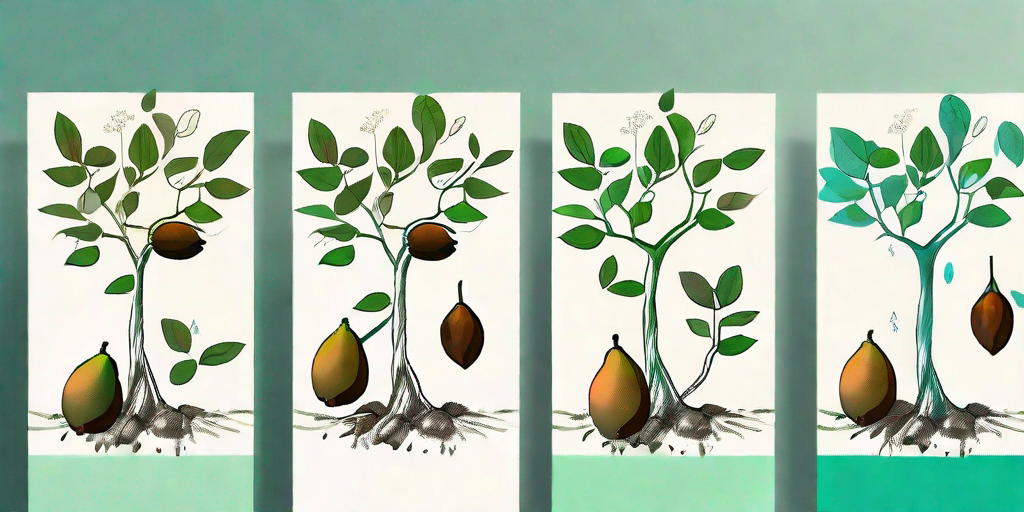
Welcome, green thumbs and fruit enthusiasts! If you've ever wondered how to turn a tiny seed into a towering tree bearing sweet, tropical fruits, you're in the right place. We're about to embark on a journey from seed to sweetness, focusing on the pawpaw tree. This North American native is not only easy to grow but also produces a fruit that's a delightful mix of banana, mango, and melon flavors. So, roll up your sleeves, put on your gardening gloves, and let's get started!
Understanding the Pawpaw Tree
What is a Pawpaw Tree?
The pawpaw tree, scientifically known as Asimina triloba, is a deciduous tree native to the eastern parts of North America. It's the largest edible fruit-bearing plant native to the United States. The tree is known for its large, drooping leaves and dark brown bark. But the real star of the show is the fruit it produces, which is a large, yellowish-green to brown berry that's packed with a custard-like pulp.
Now, you might be thinking, "A tree that produces tropical fruit in North America? You're pulling my leg!" But rest assured, we're as serious as a gardener with a new pair of pruning shears. The pawpaw tree is a unique gem that's sure to add interest to your garden.
The Pawpaw Fruit
Let's talk about the fruit, the reason why you're probably considering growing a pawpaw tree. The pawpaw fruit is oval and typically 2 to 6 inches long. The skin is thin and becomes wrinkled as the fruit ripens. Inside, you'll find a creamy, custard-like pulp that's rich in vitamins and minerals.
The taste of a pawpaw fruit is often compared to a blend of banana, mango, and melon. Some people even detect a hint of vanilla. It's a tropical party in your mouth, and everyone's invited!
How to Grow a Pawpaw Tree
From Seed to Seedling
Growing a pawpaw tree from seed is a labor of love, but it's not as complicated as you might think. The first step is to get your hands on some pawpaw seeds. You can either buy them online or source them from a ripe pawpaw fruit.
Once you have your seeds, it's time to stratify them. This process involves storing the seeds in a moist environment at a low temperature to mimic winter conditions. This can be done by placing the seeds in a bag with moist peat moss and storing them in the refrigerator for 90 to 120 days.
Planting and Care
After stratification, it's time to plant your seeds. Pawpaw trees prefer well-drained soil that's rich in organic matter. Plant the seeds about 1 inch deep and keep the soil moist but not waterlogged. With a bit of patience, you should see your seedlings emerge in 2 to 3 weeks.
Caring for a pawpaw tree involves regular watering, especially during dry periods. The tree also benefits from a layer of mulch to help retain moisture. As for pruning, pawpaw trees don't require much. Just remove any dead or diseased branches as needed.
Harvesting and Enjoying Pawpaw Fruits
When to Harvest
Pawpaw fruits typically ripen in late summer to early fall. You'll know they're ready to harvest when the skin turns from green to yellowish-brown and the fruit gives slightly when squeezed. But be careful not to wait too long, as overripe pawpaws can quickly become a feast for wildlife!
Harvesting pawpaw fruits is as easy as picking apples. Simply twist the fruit off the branch or use a fruit picker if the tree is tall. Remember to handle the fruits gently to avoid bruising.
How to Enjoy Pawpaw Fruits
Now for the fun part - enjoying your homegrown pawpaw fruits! The simplest way to eat a pawpaw is to cut it in half and scoop out the pulp with a spoon. But if you're feeling adventurous, pawpaw pulp can be used in a variety of recipes, from smoothies to pies to ice cream.
Just remember to remove the large, dark seeds before eating or cooking with the pulp. And don't forget to save a few seeds for your next round of pawpaw tree planting!
Frequently Asked Questions
- How long does it take for a pawpaw tree to bear fruit?
It typically takes 4 to 8 years for a pawpaw tree grown from seed to bear fruit. However, trees grown from grafted material can bear fruit in as little as 2 to 3 years.
- Can pawpaw trees grow in containers?
Yes, pawpaw trees can be grown in large containers. However, they may not reach their full size and the fruit yield may be lower compared to trees grown in the ground.
- Do I need more than one pawpaw tree for pollination?
Yes, pawpaw trees are not self-fertile, so you'll need at least two trees for cross-pollination.
And there you have it, folks! A comprehensive guide to growing pawpaw trees. With a bit of patience and care, you'll be enjoying your own homegrown tropical fruits in no time. So why wait? Start your pawpaw growing adventure today!











